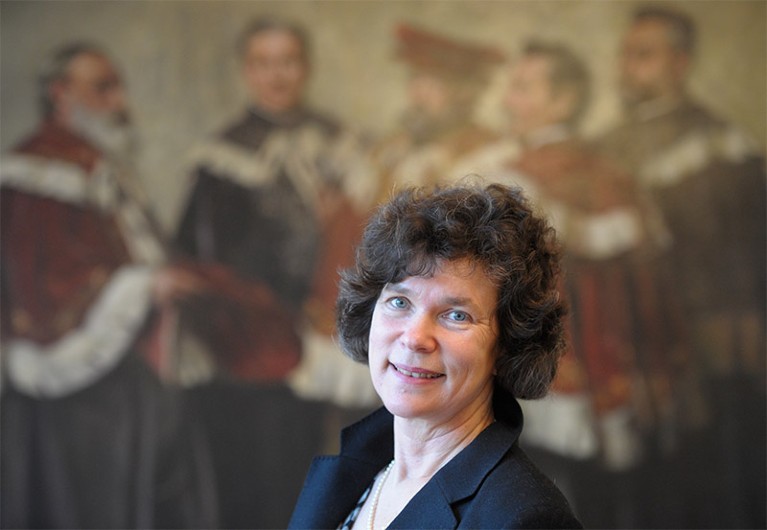
Beate SchückingCredit: Peter Endig/dpa
In 2011, Beate Schücking became the first female head of Leipzig University in its 600-year history. A total of 967 men preceded her. Born in 1956, Schücking earned her medical degree at the age of 24 and her first professorship at 33, and is a specialist in maternal and child health research and psychosocial medicine. She was re-elected in 2017.
What was the scientific landscape like for women when you started out?
In the 1970s, not as many women were beginning a scientific career in Germany as today. The ratio of female medicine students to men back then was below 30%. The general idea, also dominant in my family, was women can study, but once married, they should exclusively focus on their family.
What have been the biggest changes since then?
Having a family and a scientific career is seen as compatible. Still, conditions for female scientists are harder than for their male colleagues. Long-lasting, outdated role models don’t change that fast. Often, women still have to choose between children and their career, and run the risk of having neither. But now, you also see male scientists who are single parents.
Why does Germany still have one of the lowest ratios of female professors?
We have enough programmes to support women in their careers. It’s now time to improve society’s appreciation of women in leadership positions. We have very few women managing Germany’s publicly traded companies, and high-ranking, female politicians are likely to trigger more controversy and criticism compared with men. It takes time to change the role models that have dominated Germany for so long. It’s a step by step process to change people’s mindsets.

 Career Guide: Germany
Career Guide: Germany
 An introduction to the complexities of the German research scene
An introduction to the complexities of the German research scene
 How Germany is winning at turning its research to commercial application
How Germany is winning at turning its research to commercial application
 Ten reasons to move to Germany as a researcher
Ten reasons to move to Germany as a researcher
 Scientists in Germany identify first hybrid hominin
Scientists in Germany identify first hybrid hominin
 The science of starting a new life
The science of starting a new life
 British chemist battles xenophobia in Germany
British chemist battles xenophobia in Germany
 Germany faces its future as a pioneer in sustainability and renewable energy
Germany faces its future as a pioneer in sustainability and renewable energy
 The second coming of solar
The second coming of solar
 Ten research collaborations between Germany and the rest of the world
Ten research collaborations between Germany and the rest of the world
 Sexism is still a problem for German research
Sexism is still a problem for German research
 Germany’s attitude to start-up firms is undergoing profound change
Germany’s attitude to start-up firms is undergoing profound change
 No more career headaches
No more career headaches




